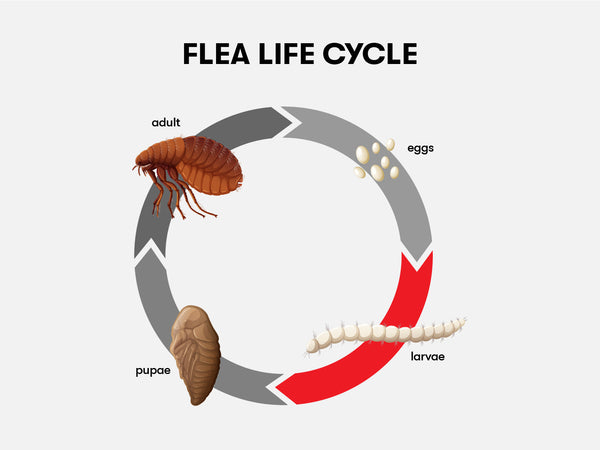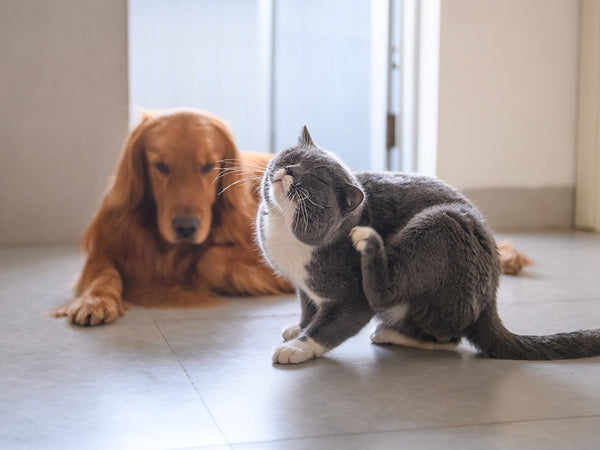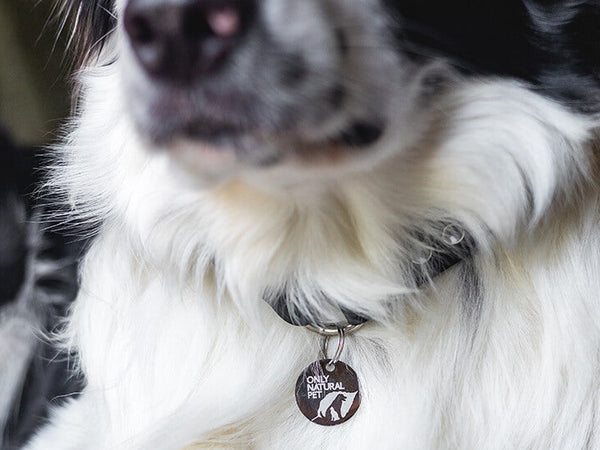How to Prevent Lost Pets (and What to Do If They Are)
Written by: Richard Rowlands, Pet Health Expert
A lost pet is every pet parent’s worst nightmare. The panic, anxiety, and stress that set in the second you realize your fur kid is gone is unlike any other. Hopefully, you never have to experience it!
You can take several steps to minimize the chance of your pet getting lost and ensure they are returned home safe if they do manage to get away from you. In this post, we’ll share some practical tips to help you keep your pets safe and prevent them from getting lost.
Make Sure Your Pet Wears A Collar With ID Tags
A sturdy, properly fitting collar that’s secure and equipped with ID tags is a must for any dog or cat and should be worn at all times inside and outside of the home. This is especially true when they venture outdoors for supervised exercise time or even just to do their business in the backyard.
A collar with ID tags will allow anyone who finds your lost pet to quickly identify where their home is without needing to bring them to a shelter. Many pets who sneak out of their homes or yards are found and returned this way.
Ensure the collar fits properly around your pet’s neck and doesn’t easily slide off over their head. Brands like Arcadia Trail will offer various sizing options for most of their collars, including small, medium, large, and x-large. And gone are the days of drab, boring collars. There is a huge array of collars to match your pet's unique personality.
When it comes to ID tags, these can be bought online, at your local pet store, in local hardware stores, and basically any place that does engraving. Your ID tag should include your pet’s name, your phone number, and if room allows your home address.
Microchip Your Pet
Microchips are tiny, about the size of a grain of rice. They’re implanted under the skin, between your pet’s shoulder blades using a special syringe. There is no complicated or invasive procedure involved. It is a speedy procedure, and many pets barely notice it is being performed!
Plus, most microchips are designed to last 25 years, so there is no need to replace them.
Once the microchip is in place, it can be detected using a special scanner. Most vet clinics and shelters will have these scanners on hand. Usually, it is the first thing they do when presented with a lost pet to quickly find the owners.
But how do they work?
When scanned, microchips will display a unique alphanumeric code. This code will be tied to your personal information that is kept in an electronic database. For this reason, it is essential to speak to your vet when getting the microchipping done about how to best register your pet for your area.
In some cases, you will be able to register through your vet, but other times may need to do so directly with your local city government offices.
Secure Your Property
Making sure your home and outdoor property are secure is essential in preventing a lost pet.
Fences and walls should be high and sturdy enough to contain your pet. Remember, cats can climb, and so can some dogs! Plus, they can all jump as well. What you might think is adequate may be easily scalable.
You’ll also want to regularly check the fencing for holes or gaps as well. This is especially true of wooden fences that may weaken or deteriorate over time due to weather exposure. Also, check any gates to verify the locks and latches are sturdy and cannot be opened or jostled by rambunctious pets who may wiggle them loose.
If your dog is a digger, you’ll also need to consider how far underground your fence goes and take measures to properly secure this potential escape route.
Screenless windows or those with holes in them can be another point of escape. Cats are agile and may wander out onto a rooftop and away through a nearby tree. But dogs have also been known to take a leap of faith now and again, especially when squirrels are involved!
Spay Or Neuter Your Pet
Spaying or neutering your pet has some definite reproductive health benefits, including reducing cancer in male and female pets. It can also decrease your chances of ending up with a lost pet as well.
Animals that are fixed are less likely to attempt to escape and roam to satisfy their hormonal needs by seeking out a mate.
It’s also a service to the other pets in your neighborhood for a couple of reasons. Female dogs and cats who are spayed will not release potent pheromones that may cause males in the community to go wild and come looking for them.
Additionally, should your dog or cat get out, if they are spayed or neutered, there’s no chance of them breeding with other pets or strays in your area. This is good because it helps manage the overpopulation of stray and abandoned pets by avoiding unwanted pregnancies.
Always Keep Dogs On A Leash
If your property is unfenced and open or you are outside of your fenced yard, it’s a good idea to always keep your dog on a leash. Even well-trained dogs can be spooked by loud, sudden noises and bolt or be tempted to make a run for it by other animals, like dogs or local wildlife.
Having the proper leash and harness when on walks is essential for making sure your dog won’t get away from you.
Using a harness instead of just a collar is a good idea because they fit more securely and are less likely to come off. Sometimes, when a dog pulls backward, they can slip out of their collar. However, a secure harness will not be so easy to escape. Two popular types of harnesses are front clip, for controlling and managing pulling, and back clip, which is the classic style you’re probably more familiar with.
You also have many different options for leashes. Flat leashes, made of robust synthetic material with a connecting buckle at one end and a hand loop at the other, will be the most common that you’re probably familiar with. Companies like West Paw make great flat leashes with a bit of flair and style that are perfect for regular dog walks.
A variant of the flat leash is slip leashes. Like RuffWear’s Just-A-Cinch, they fit over a dog’s head instead of attaching to a harness.
If you’re the kind of person who likes to give your dog the chance to explore, long leashes (10 feet) or longline leashes (up to 30 feet) may be an option for you. And for those who go to off-leash dog parks, you can use “off-leash leashes,” which, like the Arcadia Trail Easy Grab Leash, offer you a handle to latch onto should the need arise but avoid anything dragging on the ground.
What To Do If Your Pet Does Get Lost
Having a plan in place ahead of time can really help you out if this unthinkable situation occurs. Chances are, if your beloved fur kid goes missing, you’ll feel stressed or panicked. This way, you won’t miss any practical steps to help get your dog or cat home as soon as possible.
Always keep current pics of your pet handy. Ensure these pictures clearly show what your pet looks like and that they are recent pics. If your pet requires regular grooming, keep a few. Owners of pups like poodles and Shih Tzus will know full well that their pup’s appearance changes drastically after grooming.
You can also have a pre-made flyer on your computer for easy printing. Include info like your pet’s name, their breed, general appearance, including color, and anything distinctive about them. This last point could be physical, such as different colored eyes or their behavior or mannerisms. Are they shy? Do they have a limp? That sort of detail.
You can print these flyers and post them around your neighborhood and ask local businesses to post them in their windows as well.
Offering a reward on your flyer is also an excellent incentive for people to not just keep an eye out for your lost pet but actively go looking for them. In a case where the person who finds them refuses the reward, you can always donate it to a local animal shelter or rescue organization instead.
You should also contact all of the vet offices and animal shelters in your area. Often, people will turn lost pets into these kinds of places. It’s also good to let them know ahead of time and leave your contact info with them should someone come by after you’ve called.
Lastly, post on social media! Many neighborhoods have community groups and pages these days. Posting and sharing on there, and asking people to share your posts, will reach tons of folks in your area in ways that flyers might not.
Conclusion
Prevention is the best way to avoid losing a pet. A secure home and property and a good quality leash will go a long way to ensuring you’re never in the situation where you have to go looking for them.
However, a collar with updated ID tags and having your pet microchipped will help your dog or cat get back to you if they do go missing.
Lastly, be prepared with a plan if this happens. That’s less stress less and more focus on getting your beloved pet back as quickly as possible.


















